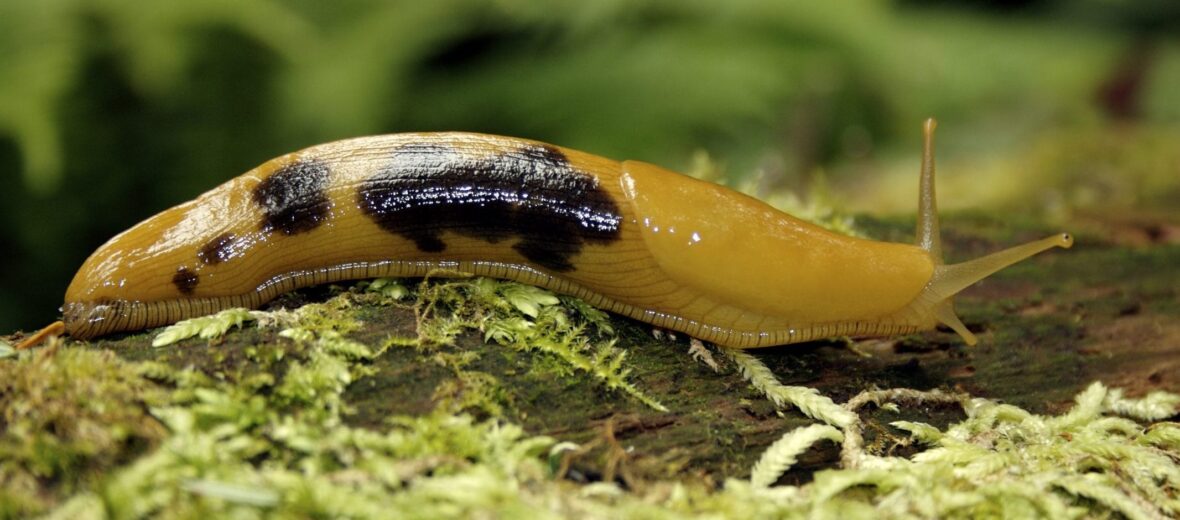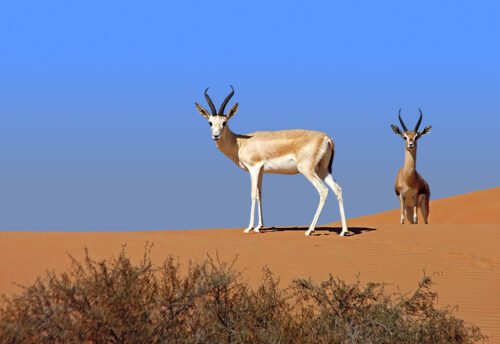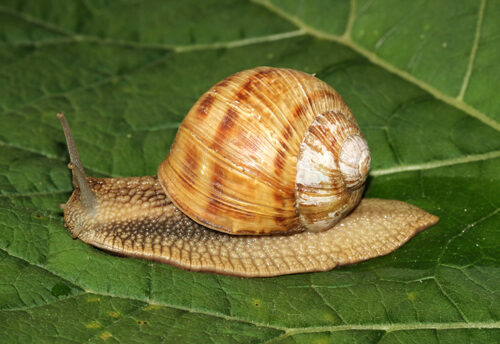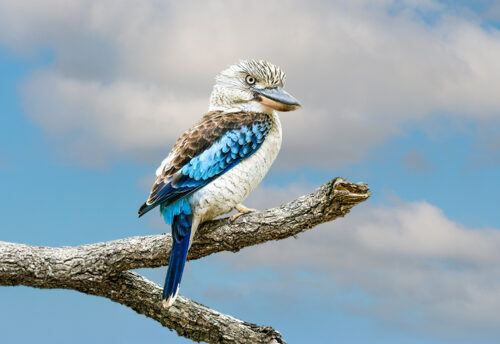
After the European Limax cinereoniger, the California banana slug is the second largest slug in the world. Banana slugs are native to the redwood forests in the Pacific coast in North America. You can typically view them cruising around on the forest floor, especially when it’s wet out. There are 3 known species of yellow slugs found in the United States. Banana slugs aren’t listed on the IUCN’s endangered species list.
First the Stats…
Scientific name: Ariolimax
Weight: Up to 4.1 ounces
Length: Up to 8 inches
Lifespan: Up to 7 years
Now on to the Facts!
1.) These speedy mollusks can move at up to 6.5 feet per minute. Hey, that’s pretty fast, for a slug.
2.) Banana slugs are detritivores (eat organic matter, like leaves, animal waste, and moss).
3.) The slimy, sticky coating on slugs helps them breathe, absorb water, and protects them from predators. If you get any of that slime in your mouth you’ll experience numbing and a very foul taste!
4.) A California banana slug’s slime absorbs 100x its weight in water from any moist surface it touches!
5.) Their amazing slime absorbs nutrients and transfers them directly to the slug.
But wait, there’s more on the California banana slug!
6.) California banana slugs are typically bright yellow; although they may also be tan, greenish, brown, or white.
7.) The slime also contains pheromones to attract other slugs for mating.
Did you know…?
Their slime coating is neither liquid nor solid, but instead a liquid crystal that has been studied by material scientists. It has been synthesized for use in surgeries as an advanced, biodegradable glue that is used for sutures!
8.) Slugs are simultaneous hermaphrodites (adult organism that has both male & female sexual organs at the same time), and they reproduce by exchanging sperm with their partner. They create up to 75 translucent eggs, which are laid under a log, stump, the base of a tree, or in leaf litter.
9.) Slugs use 2 pairs of retractable tentacles, or stalks, to sense their environment. The bigger, upper pair, called “eyestalks”, are used to detect light or movement. The 2nd, lower pair are used to detect a variety of chemicals.
10.) Bananas have a single lung on their right side.
Now a Short California Banana Slug Video!
Also, check out the Critter Science YouTube channel. Videos added frequently!
Want to suggest a critter for me to write about? Let me know here.



